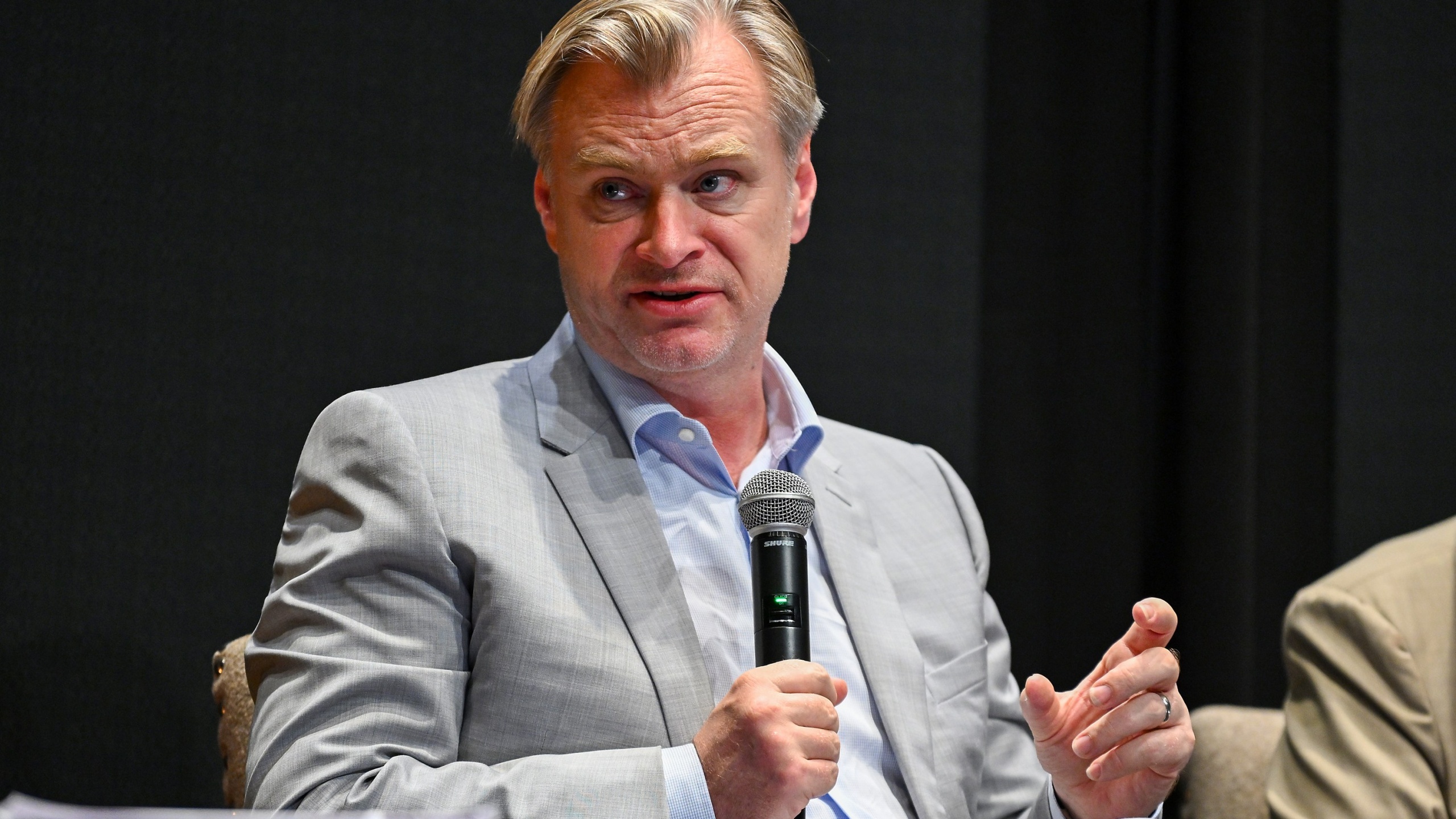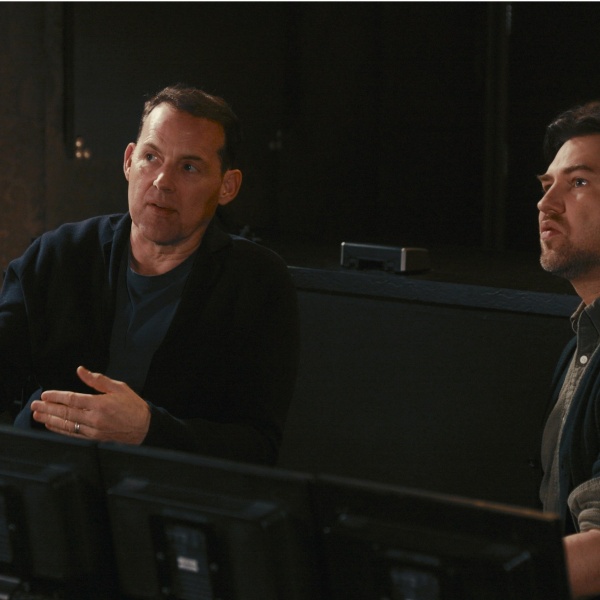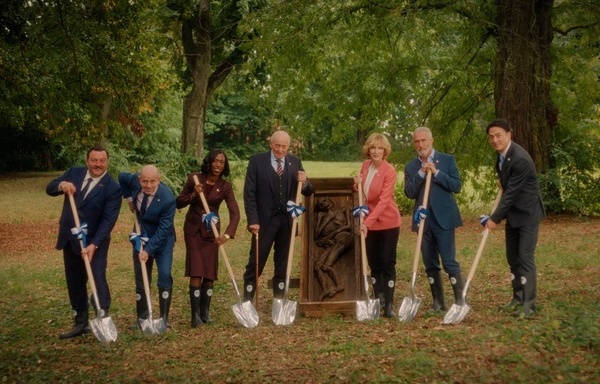In the new MSNBC documentary “To End All War: Oppenheimer and the Atomic Bomb,” the impact of the 1945 nuclear attacks on Hiroshima and Nagasaki are seen in grisly detail: Archival footage from the U.S. military recorded days after the bombings show survivors covered in horrific burns, with sagging flesh and clothing seared to their bodies, as they stand in the wreckage of cities leveled to the ground. Although the documentary, which is now streaming on Peacock, was released in part to drum up hype for Christopher Nolan’s Universal-produced “Oppenheimer,” no such footage appears in his own movie.
Nolan defended the decision during a conversation after a screening of the movie in New York over the weekend. His depiction of Manhattan Project chief scientist Robert Oppenheimer (Cillian Murphy) doesn’t show Hiroshima or Nagasaki, he said, not to sanitize the subject, but because the movie extends from its subject’s specific point of view. “We know so much more than he did at the time,” Nolan said. “He learned about the bombings of Hiroshima and Nagasaki on the radio, the same as the rest of the world.”
Since the days of his early features “Following” and “Memento,” Nolan has fixated on subjective perspectives as a core aspect of his filmmaking strategy. “Oppenheimer” follows suit by pivoting between two perspectives throughout. The physicist’s experiences take place in color, while the memories of disgraced U.S. Atomic Energy Commission chairman Lewis Strauss (Robert Downey Jr.) unfold in black-and-white sequences woven throughout the story. “It’s not a documentary,” Nolan said. “It is an interpretation. That is my job. I think it’s narrative dramatic filmmaking.”
The bulk of “Oppenheimer,” however, explores Oppenheimer’s version of events and his evolving moral compass. It shows his willingness to encourage bombing targets that would cause mass casualties to demonstrate the power of the bomb as well his ensuing regrets, which he took public, losing his security clearance as a result.
One key scene, recounted in the documentary, finds the scientist in the Oval Office announcing that he has “blood on my hands” to a bemused Harry S. Truman (Gary Oldman). That admission, which reportedly led the president to denounce Oppenheimer as a “crybaby,” arrived after Oppenheimer realized he had been in denial about the full ramifications of his work. “There’s also a recurring motif that has a lot to do with him closing his eyes,” Nolan said. “To me, it’s really about staying in his head.”

That approach appeared to satisfy the experts who gathered with Nolan for a discussion on Saturday, one day before the 78th anniversary of the Trinity Test at the Los Alamos National Laborary, in which Oppenheimer oversaw the first successful nuclear test. In the past, Nolan’s hard-science approach with everything the wormholes of “Interstellar” to the time-shifting dynamics of “Tenet” have helped him build a foundation of support from the science community. With “Oppenheimer,” the physicist seal of approval has more to do with the philosophical aspects of the movie, which explores the role of science in determining the fate of all human life.
“I just saw the movie and I’m still under the spell,” said Italian physicist Carlo Riveli. “I think everybody should see this movie not only because it’s fantastic, but because the kind of questions that it raises are not just about the ’40s and general issues about morality of science. These are burning questions today. The doomsday clock that is supposed to estimate the risk of nuclear catastrophe has never been closer to midnight. We are in a situation where the kind of concerns that Oppenheimer was expressing — in his confused way — are our concerns today. I think this is what the movie brings out so strongly.”
As for the depiction of the Trinity Test and the scientific brainstorming that leads up to it, Nolan once again scored the support of Nobel Prize-winning “Interstellar” advisor Kip Thorne, who also joined the discussion on Saturday. “I think he did superbly well as he always does,” Thorne said. “Among all the people I’ve worked with in Hollywood he understands more science having learned it from researching online than anyone else, except Anne Hathaway.”
Nolan recreated the nuclear detonation without CGI on location, a notable contrast with the last time he depicted such an explosion, for the climax of “The Dark Knight Rises” in 2012. The scene, which finds Batman speeding off to the horizon to detonate a nuclear device at a safe distance from Gotham, had no practical effects. “It’s meant to feel like it’s far away enough that it’s not going to affect you,” Nolan said. “You’re meant to have a sense that we got away with it. We did that with CG. My team did incredible research.” The Trinity Test, on the other hand, posed a different challenge. “This had to feel beautiful and terrifying in equal measures,” Nolan said. “Real world imagery has that bite.”
The Trinity scene also signals the beginning of Oppenheimer’s realization that he has helped craft a device with the power to destory the world. That perspective injects the movie with polemical urgency designed to have an impact on contemporary conversations around the creation and retention of nuclear devices around the world. “Nuclear armaments are an extremely dangerous thing to have lying around the house,” Nolan said. “Coming out of making this film, and as it starts getting out to the world, I realized that our relationship to the role of nuclear weapons ebbs and flows due to the political situation, and it shouldn’t, because the threat is constant. … Some of the closest moments of nuclear disaster have actually been in times of relative calm.”
The severity of the current threat remains an open question. Nolan was also joined in the conversation by Thomas Mason, the current director of Los Alamos, who sits in Oppenheimer’s old job. He cited an observation by historian and philosopher Yuval Noah Harari that suggested wartime conflict had gone down as a direct result of the initial nuclear detonations. “If you look at all of recorded human history, most of the time,15 percent of the population died from violence, from armed conflict,” Mason said. “Since 1945, it’s been single digit percentages. So Oppenheimer’s dream that war would end did not come to pass obviously — but as horrific as the concept of nuclear destruction is, it has acted as a restraint.”
At that point, Rivoli cut him off. “So far,” he said. Nervous laughter echoed across the room.
Universal Pictures releases “Oppenheimer” in theaters on Friday, July 21.



